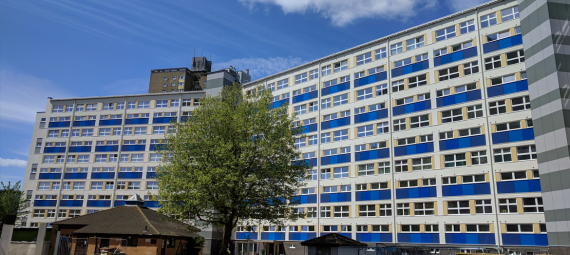Sustainable Energy Research Group
Prof Patrick James
https://www.rockwool.co.uk/why-stone-wool/case-studies/wilmcote-house/
The Building Centre – Thursday 8 Nov 2018
*To view the video of the event, click here.
This event brings together key speakers to provide insight into the recently completed refurbishment of Wilmcote House.
Speakers in this presentation share their role in the refurbishment process and reflect on the economic and social achievements of the project; a testament to what can be accomplished by taking a holistic, fabric first, people-focused approach to building refurbishment.
Speakers:
– James Traynor, Managing Director, ECD Architects
– Professor Patrick James, Professor of Energy and Buildings, School of Engineering, Southampton University
– Mark Hill, National Specification Manager, Rockwool
The landmark estate in Portsmouth has been transformed to become the largest EnerPHiT (the retrofit equivalent of Passivhaus) standard scheme yet delivered with residents in-situ.
Wilmcote House was built by local authorities in the 1960s to respond to the need for social housing provision, the high-rise, high-density estate is a typically prominent feature of Britain’s urban landscape. The three, 11-story blocks include over 100 maisonettes and flats and still provide valuable affordable housing for Portsmouth Council and, in order to bring the buildings up to date, the council opted for a major refurbishment to be led by ECD Architects.
Following a four-year programme and close collaboration between architects, academics, manufacturers and the council, the buildings have been upgraded with a fabric first refurbishment to provide comfortable, safe and thermally efficient homes through material renovation.
Professor Patrick James and his team from the University of Southampton were invited to take part in this project by Portsmouth City Council. Their role was to research the energy loss of the building and investigate the use of heating by the residents. Their results were able to inform the design process and evaluate the success of the project from a carbon reduction point of view.
Fuel poverty was a prominent cause of concern. So too damp, mould and condensation. Portsmouth City Council invited the University of Southampton to install data loggers into a number of properties which revealed compelling results.
“People weren’t heating their homes to World Health Organisation comfort level of 18oC, … Residents were making a stark choice – ‘the electric heating is too expensive, I won’t use it’.”
Steve Groves, Head of Building Maintenance at Portsmouth City Council.
The ROCKWOOL external insulation was fitted as a 300/400mm zone fixed to newly assembled, external steel frames to insulate and wrap the entire building. The result is excellent thermal performance and exceptional air tightness, reducing draughts, condensation and mould growth.

“Due to the fabric improvements, we’re now more confident that the residents don’t need as much heating in their properties, … In fact, we’re looking to take out some of the existing storage heaters so that there is a maximum of two per property — one in the lounge and one in the downstairs hall. We’ve been through a winter season, so we know that residents in completed properties are not using their heating.”
Steve Groves Head of Building Maintenance at Portsmouth City Council.
Other works at Wilmcote House included roof replacement, installation of triple glazed windows, extension of the living areas, and more efficient heating and hot water and adjustment of the ventilation with heat recovery system.
The refurbishment has also brought the community together by improving the appearance of the estate and investing occupants with a greater sense of pride in their surroundings.
In fact, community engagement was a major theme throughout the project. Residents of Wilmcote House were comprehensively consulted on the refurbishment proposals via a series of resident open days and feedback sessions, and dialogue was maintained throughout the build.
Now, that the Wilmcote House transformation is complete, the University of Southampton and the LSE will continue to speak to residents and monitor the building to measure the effectiveness of the intervention works.
The Council has dramatically improved the living environment and quality of life of residents, investing in people, not just the physical condition of the housing stock to reduce future maintenance burdens. And the anecdotal evidence and feedback received so far has the project already proving to be a big success, as residents in completed properties experience the positive impacts on their health, well-being and reduced fuel bills.

